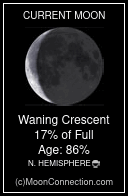(In a nutshell, this program provides low-income, uninsured, and underserved women access to timely, free high-quality screening and diagnostic services, to detect breast and cervical cancer at the earliest stages, through the National Breast and Cervical Cancer Early Detection Program (NBCCEDP). Eligible women are also provided with Medicaid to pay for certain cancer related expenses if they are enrolled in the National Breast and Cervical Cancer Early Detection Program (NBCCEDP) prior to having been diagnosed with the above mentioned cancer(s). Many women needing treatment for breast or cervical cancer are not eligible for Medicaid unless they are enrolled in the NBCCEDP program. This is probably true for most or all states.)
Program Eligibility
An estimated 8–11% of U.S. women of screening age are eligible to receive NBCCEDP services. Federal guidelines establish an eligibility baseline to direct services to uninsured and underinsured women at or below 250% of federal poverty level; ages 18–64 for cervical screening; ages 40–64 for breast screening.
On October 24, 2000, President William Clinton signed into law the Breast and Cervical Cancer Prevention and Treatment Act of 2000 (Public Law 106-354). (PDF-115KB) This Act gives states the option to provide medical assistance through Medicaid to eligible women who were screened for and found to have breast or cervical cancer, including precancerous conditions, through the National Breast and Cervical Cancer Early Detection Program (NBCCEDP).
On January 15, 2002, President Bush signed the Native American Breast and Cervical Cancer Treatment Technical Amendment Act of 2001 (Public Law No. 107-121). (PDF-33KB) This bill amends title XIX of the Social Security Act to clarify that Indian women with breast or cervical cancer who are eligible for health services provided under a medical care program of the Indian Health Service or of a tribal organization are included in the optional Medicaid eligibility category of breast or cervical cancer patients added by the Breast and Cervical Cancer Prevention and Treatment Act of 2000.
NBCCEDP, which is administered by the Centers for Disease Control and Prevention (CDC), provides free breast and cervical cancer screening and follow-up diagnostic services to women in need, such as those who are uninsured or have low incomes. In 2000, CDC began its 10th year of this landmark program, supporting early detection programs in all 50 states, 6 U.S. territories, the District of Columbia, and 12 American Indian and Alaska Native organizations.
As of May 2004, all states have completed all steps required to accept the new Medicaid option.
Medicaid Plan Revisions as of 1/10/03
The Department of Health and Human Services Secretary Tommy G. Thompson has approved a total of 48 states' and the District of Columbia's proposals to expand Medicaid benefits to uninsured women who are diagnosed with breast or cervical cancer through a federal screening program. For additional information, read the press release.
What is the Breast and Cervical Cancer Prevention and Treatment Act?
Contacts for More Information
- NBCCEDP Contacts
NBCCEDP contacts can answer questions regarding NBCCEDP program eligibility, as well as provide information about locations where services are offered. - CMS
As the administering agency for Medicaid, CMS can provide additional information. - National Conference of State Legislatures
State Legislation Relating to the Breast and Cervical Cancer Prevention and Treatment Act of 2000*
Page last reviewed: June 27, 2007
Page last updated: June 27, 2007
Content source: National Center for Chronic Disease Prevention and Health Promotion
DISCLAIMER: The information and opinions expressed on this blog are not an endorsement or recommendation for any medical treatment, product or course of action by One For The Aging. For medical, legal or other advice, please consult appropriate professionals of your choice.
Return to TOP














